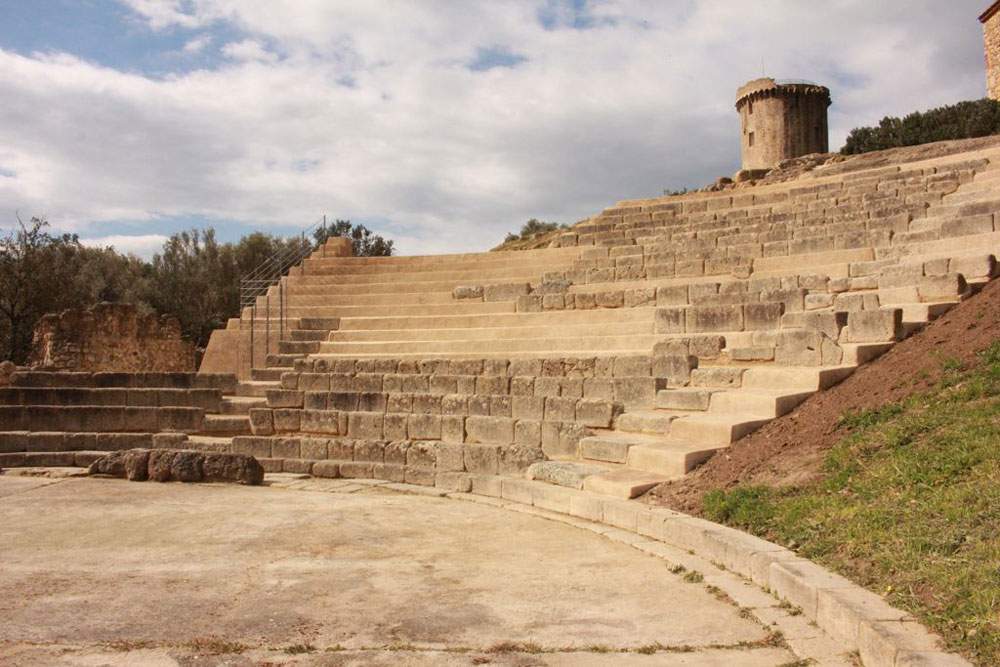Concluded the extraordinary maintenance work on theancient theater of Elea-Velia, which for about a year falls under the competence of the Archaeological Park of Paestum and Velia. An intervention aimed at ensuring the protection of the monument, but also to make it accessible to visitors, for which the sum of 158 thousand euros was spent.
The work had become necessary due to the advanced degradation of the theater building’s seat additions, which had already been partially restored by a restoration project almost two decades ago. Weeds and water infiltration were then threatening the tightness of the original blocks, which had been dismantled in the 1980s to carry out stratigraphic excavations in the area and to be reassembled during the restoration promoted by the Salerno Archaeological Superintendency in 2003. Thanks to the decision to use a different material for the modern additions that trace the earth substructure on which the seating blocks rested, the theater’s cavea is now accessible to the public. At the same time, recent work has preserved the reversible and recognizable characteristics of the 2003 intervention, following its choices even in the color of the integrated parts.
Among the first to see the theater at the conclusion of the work was the Director General of the Museums, Massimo Osanna, who commented, “I very much appreciated the work that the team of the Archaeological Park of Paestum and Velia is doing. I wanted to personally view what has been done on this monument, also after reading the accurate technical report of Francesca Condò, an architect functionary of the General Directorate of Museums, who had come to the Park a few weeks ago for an inspection. I have to say that the final result seems very positive to me, also in view of the monument’s troubled history, which makes restoration and maintenance work particularly complex. As is well known, the theater was completely excavated and then rebuilt, and the current maintenance intervention goes to improve a situation that was in great disrepair.”
“We wanted to respect the project promoted by the then superintendent Giuliana Tocco,” added the director of the Archaeological Park of Paestum and Velia, Gabriel Zuchtriegel, who also serves as superintendent within the park, “but overcoming the impossibility, which formally existed even though it was often disregarded, of allowing people access to the cavea. To this end, we also involved a structural engineer who evaluated the stability of the monument. Today everyone can access the cavea seats, of course respecting rules as happens in all archaeological sites. The purpose is not only to use the ancient building for theatrical performances, but also to give individual visitors and families access to a monument that, thanks to its restoration, can let us rediscover the amazing acoustics of ancient theaters. Those in the center of the orchestra, in fact, can reach the last rows even in a low voice and without a microphone: something to try out with children, friends and school groups when the site, which is currently closed due to the pandemic emergency, can be visited again. It is a concrete way to make people understand the mastery of ancient architects who in designing theaters cared more about sound than visual impact, as Vitruvius teaches in Book V of his treatise on architecture.”
The theater of Velia was built around 400 B.C. on the southeastern slope of the acropolis of the Magna-Greek city in an area previously occupied by a residential neighborhood. The construction of the first facility was part of a complex reorganization of the spaces of the acropolis with imposing terracing works, which were functional not only for the construction of the theater, but also for the monumentalization of the sanctuary behind it, the site of the city’s largest temple, possibly dedicated to the cult of Athena. Subsequently, the theater underwent a series of renovations and expansions, reaching its peak in the imperial era, when in Velia, unlike other Magna-Greek centers such as nearby Paestum, the Greek language was still spoken. The last phase of the theater building’s life falls in the 3rd century AD.
"Velia is a unique city in the context of Magna Graecia,“ commented the director, ”not only because of its history, which links it to the Phocians originally from Asia Minor, but also because of its important philosophical and medical tradition. On the theme of medicine and its relationship with ancient Mediterranean knowledge, we want to organize an exhibition for which we have received co-financing from the Campania Region. We look forward to welcoming back our visitors, who doubled in Velia last summer compared to previous years, a trend that bodes well for the long-awaited recovery of the cultural and tourism sector in Cilento."
Pictured, Velia’s theater after maintenance work
 |
| Velia Theater is now accessible to the public: extraordinary maintenance completed |
Warning: the translation into English of the original Italian article was created using automatic tools. We undertake to review all articles, but we do not guarantee the total absence of inaccuracies in the translation due to the program. You can find the original by clicking on the ITA button. If you find any mistake,please contact us.